Introduction
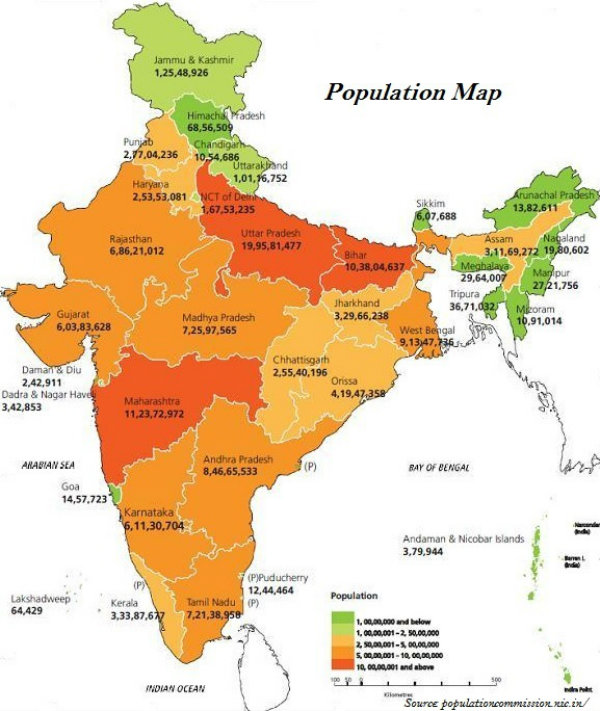
- Throughout the country, India has a highly uneven pattern of the population distribution.
- Uttar Pradesh has the highest population followed by Maharashtra, Bihar, and West Bengal.
- Terrain, climate, and availability of water largely determine the pattern of the population distribution. However, socio-economic and historical factors also affect the pattern of population distribution.
- As per the 2011 census, urban population of India was 31.16% (the details of major urban center is illustrated in the following map).
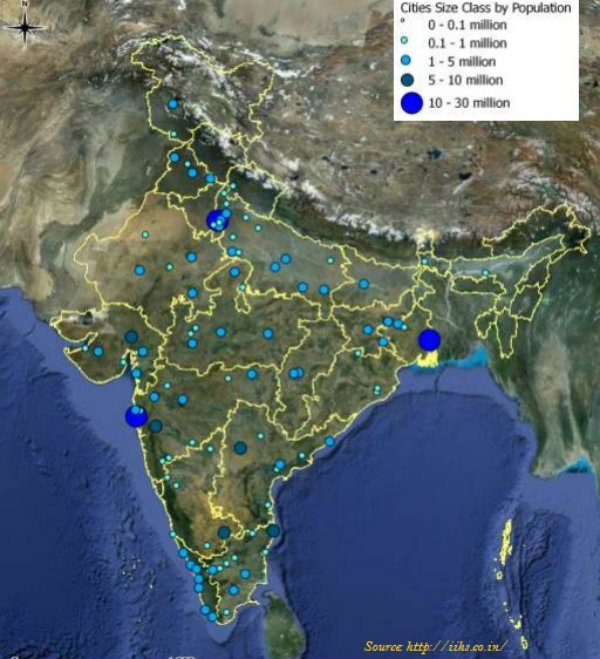
- As per census 2011, the annual population growth rate is 1.64 percent.
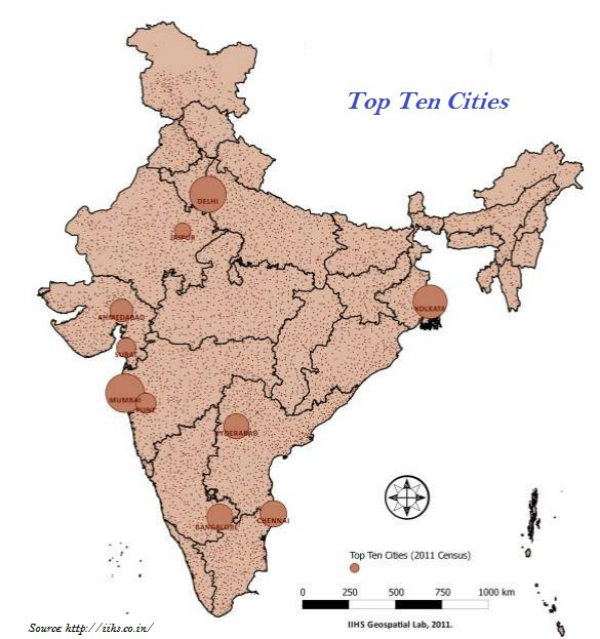
Population Density
- The density of population is expressed as the number of persons per unit area.
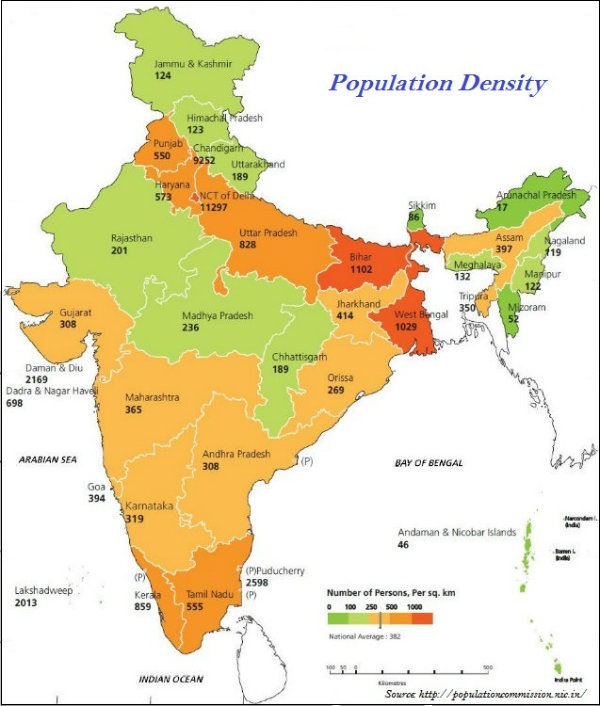
- The density of population in India as per 2011 census is 382 persons per square km.
- Bihar with 1102 people per square km is the most densely populated state of India followed by West Bengal (1029) and Uttar Pradesh (828).
- Physiological density refers to the total population divided by the net cultivated area.
- Agricultural density refers to the total agricultural population divided by the net cultivable area.
- Agricultural population includes cultivators and agricultural laborers and their family members.
Phases of Population Growth
India’s population can be analyzed in four phases −
- Phase I, the period between 1901 and 1921 − This period is known as stagnancy period, as the birth rate and death rate both were high and the population growth rate was very slow.
- Phase II, the period between 1921 and 1951 − It was the period of steady population growth.
- Phase III, the period between 1951 and 1981 − It was the period of population explosion in India.
- Phase IV, from 1981 to till date − Population growth rate though still high, but reflecting a decreasing trend.
Population Composition
- As per census 2011, 68.8 per cent of the total population lives in village and 31.2 per cent of the population lives in urban areas.
- Considering the economic status, population can be divided into categories such as main workers, marginal workers, and non-workers.
- As per the census 2011, main workers and marginal workers collectively constitute only about 39.8 percent of total population; rest are non-workers.
- About 54.6 per cent of the total working population are cultivators and agricultural laborers
- About 41.6 % are other workers, such as non-household industries, trade, commerce, construction, repair, and other services.
- The number of female workers is relatively high in the primary sector.
- The proportion of workers in agricultural sector in India has shown a declining trend over the last few decades; in 2001, it was 58.2%, whereas, in 2011, it was 54.6%.
Literacy
- As per the 2011 census, literacy rate of India was 74.04% (the details of literacy rate is illustrated in the following map − state-wise).
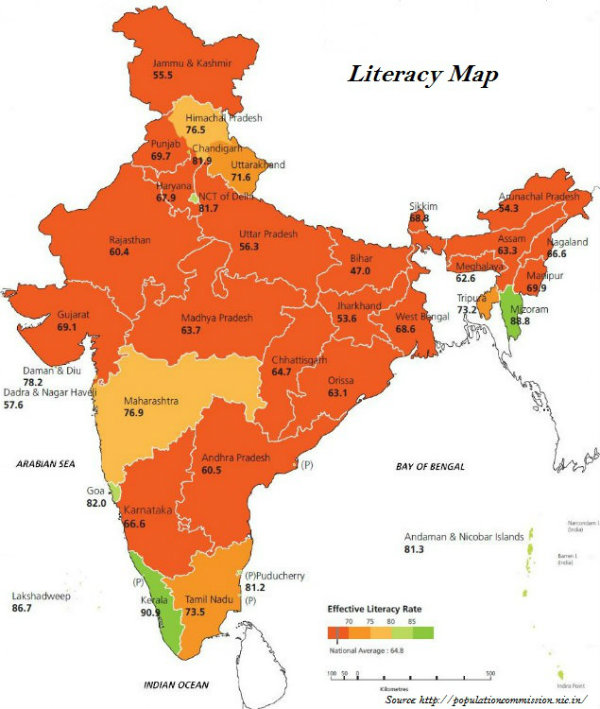
Sex Ratio
- As per the 2011 census, sex ratio of India was 940 females per 1000 males (the details of sex ratio is illustrated in the following map − state-wise).
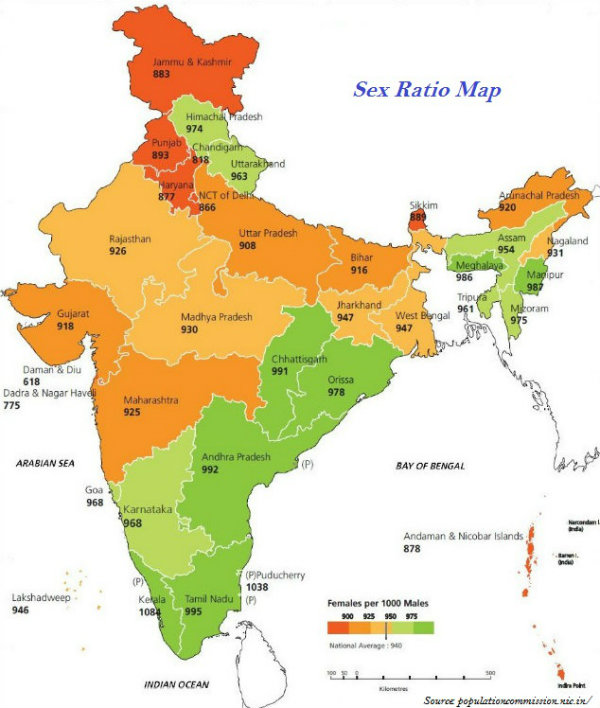
Languages
- In India, there are 22 scheduled languages and hundreds of non-scheduled languages.
- Among the scheduled languages, Hindi is the highest spoken language and Kashmiri and Sanskrit have the least number of speakers.
| Family | Sub-Family | Spoken Region |
|---|---|---|
Austric (Nishada)
1.38%
|
Austro-Asiatic
Austro-Nesian
| Meghalaya, Nicobar Islands, West Bengal, Bihar, Odisha, Assam, Madhya Pradesh, Maharashtra |
Dravidian (Dravida)
20%
| Tamil Nadu, Karnataka, Kerala, Andhra Pradesh, M.P., Odisha, Maharashtra, Bihar | |
Sino-Tibetan
(Kirata), 0.85%
|
Tibeto–Myanmari
Siamese-Chinese
| Jammu & Kashmir, Himachal Pradesh, Sikkim, Arunachal Pradesh, Assam, Nagaland, Manipur, Mizoram, Tripura, Meghalaya |
Indo–European (Aryan)
73%
| Indo-Aryan | Jammu & Kashmir, Jammu & Kashmir, Punjab, Himachal Pradesh, U.P., Rajasthan, Haryana, M.P., Bihar, Odisha, West Bengal, Assam, Gujarat, Maharashtra, Goa. |
Religions
- Religion is one of the most integral parts of the population composition of India.
- More than 80 percent of the population comprises of Hindus followed by Muslims, Christians, Sikhs, Buddhists, and Jains.

No comments:
Post a Comment